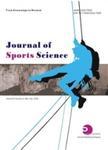Effects of Plyometric and Explosive Speed Training on Recreational Marathoners
Effects of Plyometric and Explosive Speed Training on Recreational Marathoners作者机构:School of Kinesiology University of Minnesota-Twin Cities Minneapolis MN 55455 USA Mathematics and Science Department Crown College St Bonifacius MN55375 USA
出 版 物:《Journal of Sports Science》 (运动科学(英文版))
年 卷 期:2017年第5卷第1期
页 面:1-13页
主 题:Explosive training jumps training endurance performance concurrent training core training.
摘 要:BACKGROUND: Plyometric training has been shown to improve performance in distance running events up to 5-km, but little research has been done on this type of training for marathon (42.195-km) runners. The purpose of this study was to examine the effects of plyometric and explosive speed training (PLYO) on recreational marathoners. METHODS: Twenty-two subjects (ages 18-23), were randomized to either PLYO or core training (CORE) for a weekly session performed for 12 weeks, in addition to marathon training. Sprint, jump, and distance running performance variables were measured pre- and post-intervention. RESULTS: In the sprint tests, the PLYO group improved in both the 200-m run (P ≤ 0.001) and 60-m run (P = 0.004), and trended toward improvement in the 30-m fly (P = 0.051). The difference from CORE was significant only in the 200-m (P = 0.002). The CORE group did not change in any of the sprint or jump variables. The PLYO group was significantly different from the CORE group in the standing long jump (P = 0.024). There were no differences between groups in distance running performance. Both improved in 2-mile (3.219-km) time trial (p 〈 0.001), VO2MAX (P = 0.026 for CORE; P = 0.002 for PLYO), and running economy (P = 0.01). CONCLUSION: Weekly PLYO training improves sprint speed and maintains jumping ability in recreational marathoners, but does not augment improvements in distance running performance.



